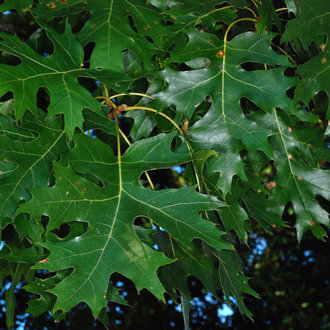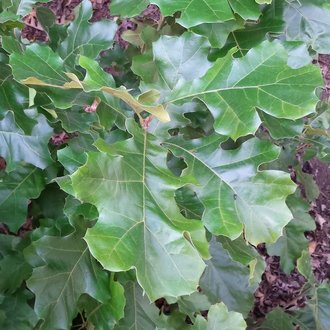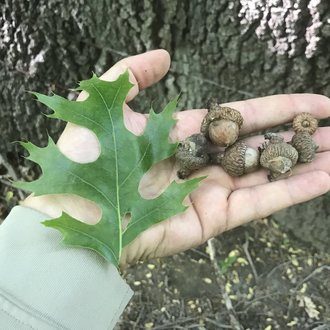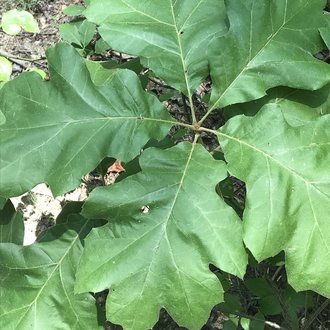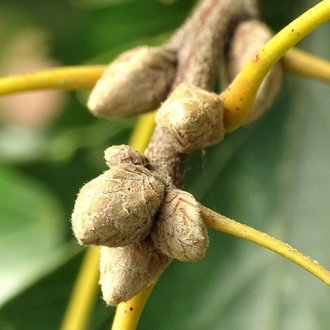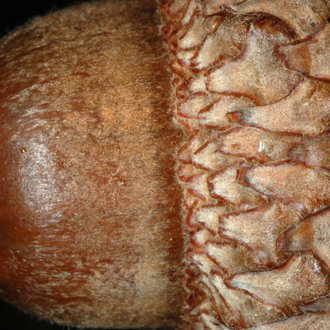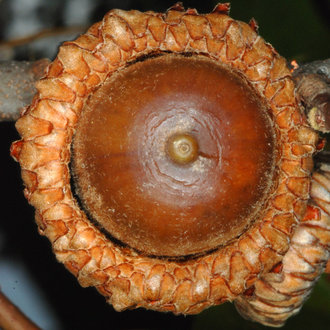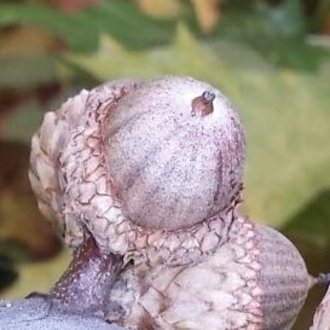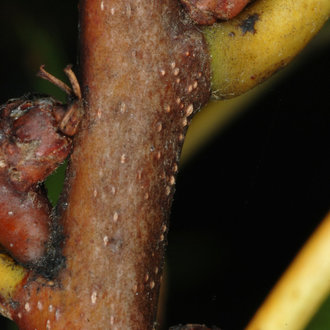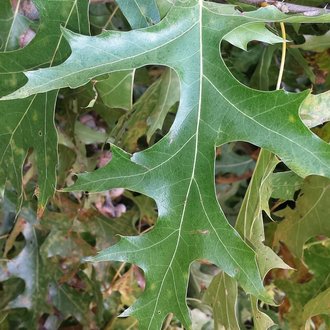Scarlet Oak vs Black Oak
These two species are notoriously difficult to distinguish and have some overlap in characteristics. Black oak is more variable than scarlet oak. Some trees, especially young trees growing in shade, are easily identifiable as black oak, but others can be difficult to distinguish. Mature trees have similar bark. In identifications it is easier to exclude scarlet oak than black oak; black oaks can have pubescence on twigs and petioles. Acorns look similar but can be distinguished by the presence or absence of rings of pits, and the looseness of cap scales. A close view of the buds can also usually distinguish them. Black oak ranges farther north, west, and south and is more of a generalist that prefers dry, nutrient-poor habitats but can also occur in moister, richer habitats. Scarlet oak is less tolerant of shade and more restricted to in dry habitats with poor or thin soil.
Scarlet Oak (Quercus coccinea) | Black Oak (Quercus velutina) |
A large, fast-growing, short-lived red oak of dry upland sites, named for the dark red color of its fall foliage. | A large oak with a wide distribution across eastern North America, common in much of its range, often a canopy tree in forests. More tolerant of dry, nutrient-poor conditions than most large oaks. |
Leaves, especially of mature trees, always have deeper sinuses than those of the broadest black oak leaves. Photo © Doug Goldman, CC BY 4.0. | Some black oak leaves can be very broad and full, with shallow sinuses between lobes, and a boxy or squarish shape to the lobes. Photo © Even Dankowicz, CC BY 4.0. |
Leaves always glabrous (without any hairs.) Photo © Michael Ellis, CC BY 4.0. | Leaves can be pubescent, especially on young trees; hair is easily removed when present. Photo © jeffreyaewick, Public Domain. |
Buds more reddish brown in color, have variable pubescence, but always pubescent at the tip and not at the base. Pubescence usually starts around halfway. Photo © Doug Goldman, CC BY 4.0. | Buds consistently pubescent throughout, the whole way to the base. Pubescence variable but averages denser, often giving the buds a whitish appearance. Photo © Shirley Zundell, CC BY 4.0. |
Scales of acorn cap all tightly pressed down at tip, not easily pulled up. Photo © Doug Goldman, CC BY 4.0. | Scales of acorn cap loose at the tip, especially at the the margin of the cap. Occasionally this results in them curving outwards visibly, but this characteristic is not always visible and you must feel the scales to confirm that they are not loose. Photo © Reuven Martin, Public Domain. |
Acorns have one or more rings of fine depressions in their shell near the tip. Photo © Doug Goldman, CC BY 4.0. | No rings of depressions near the tip; acorn shell usually smooth the whole way to the tip. Photo © Laura Gaudette, CC BY 4.0. |
Twigs and petioles not pubescent. Photo © Doug Goldman, CC BY 4.0. | Twigs and petioles may be sparsely pubescent. (Note also on this pic that the buds are less pubescent, but the pubescence is consistent throughout.) Photo © Even Dankowicz, CC BY 4.0. |
Some black oak leaves can look very similar to typical scarlet oak leaves, glabrous and with deep sinuses, but sinuses are less likely to close forming a C-shape, i.e. ends of the "C" project outward more perpendicular to the leaf's central vein. Photo © Laura Gaudette, CC BY 4.0. |
References & External Resources
These short lists show only links helpful for ID. For a complete list of references and resources also covering other aspects of ecology, visit the links section of the full article on each plant, which is the first entry here.



